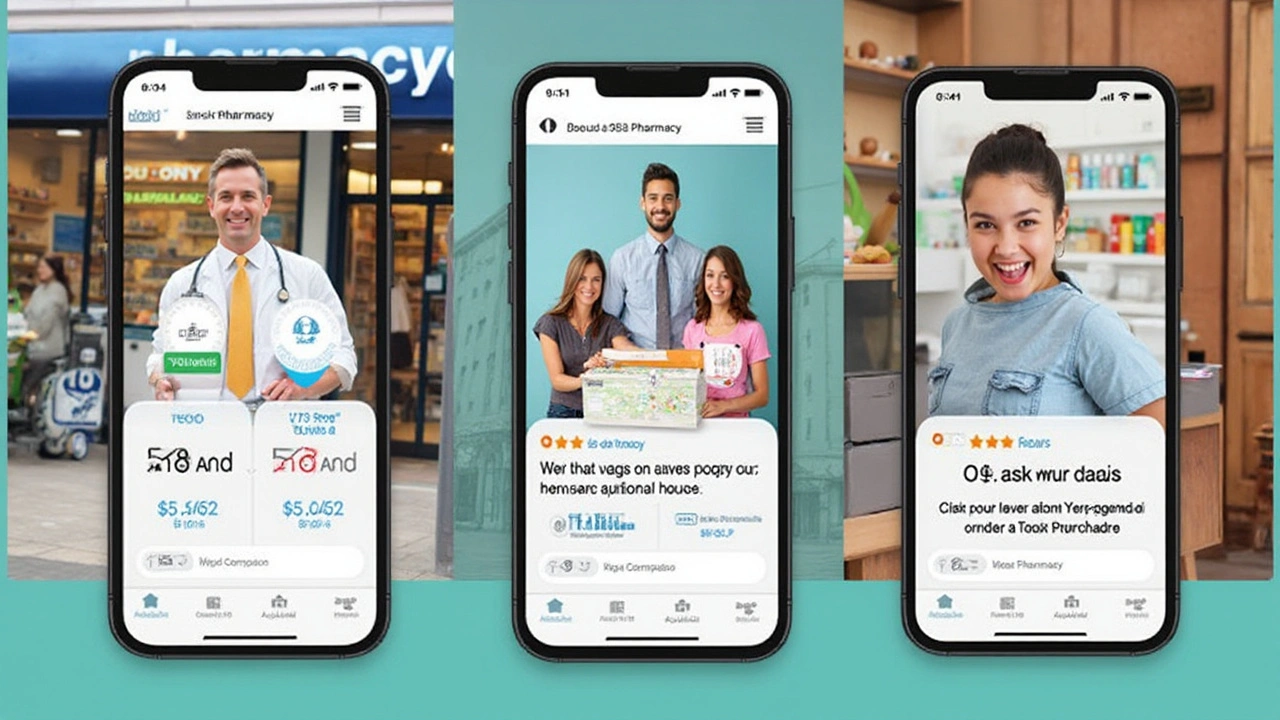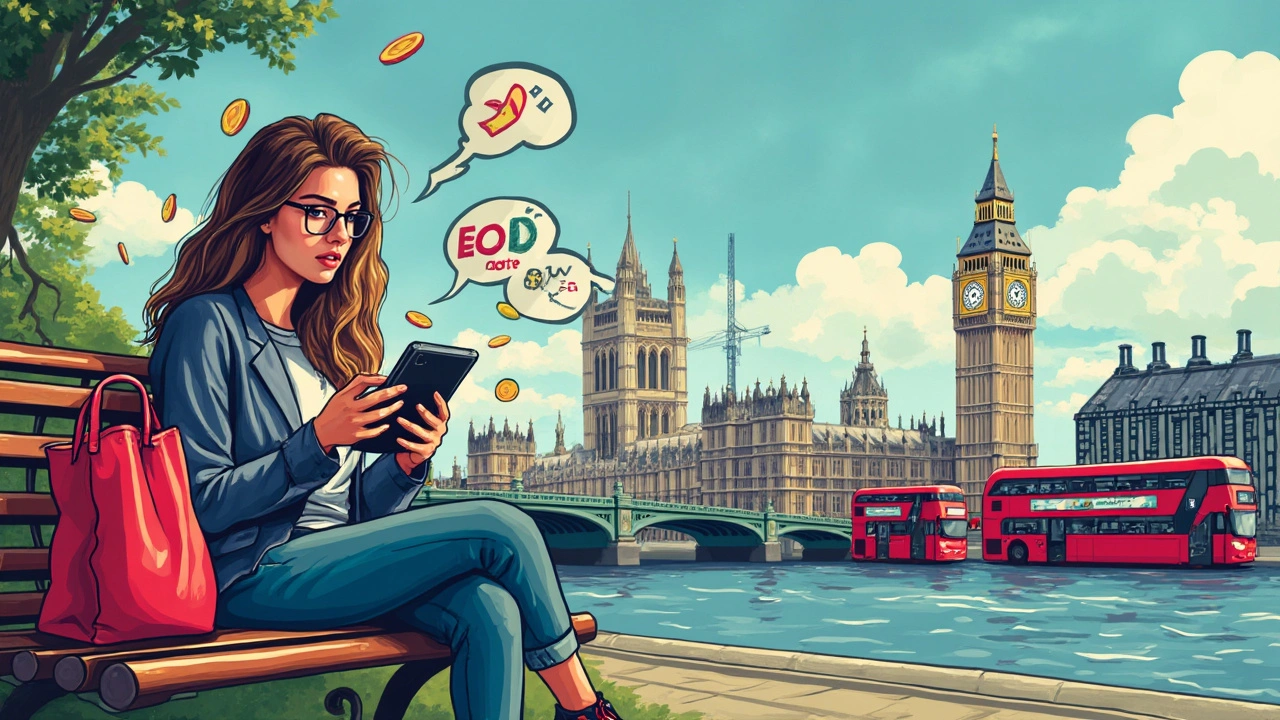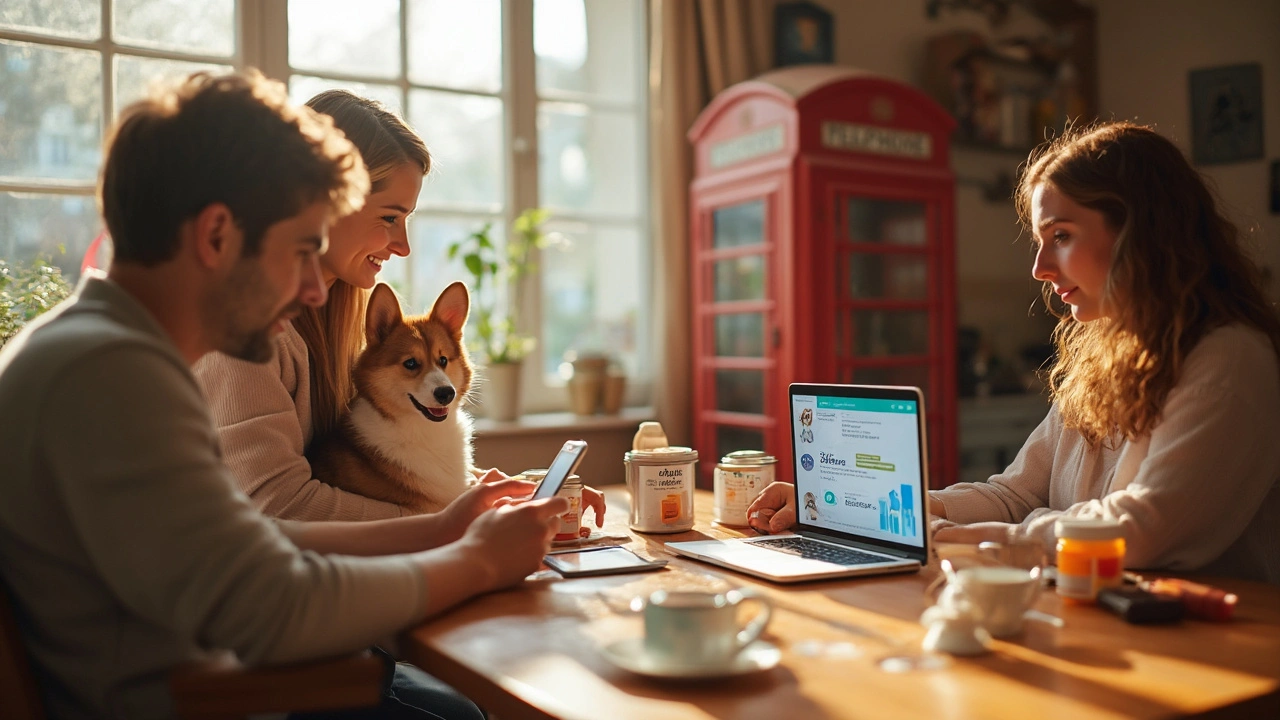The Real Cost of Prescriptions in 2025: Why Pharmacy Savings Apps Matter
Anyone who’s picked up a repeat script lately knows the pain—prices keep creeping up. Private health? Medicare? Doesn’t always budge the sticker shock. Even in cities like Melbourne and Sydney, where compounding pharmacies and big retail chains jostle for business, the cost of meds can pack a punch. Australian meds aren’t as pricey as in the States, but we’re feeling the squeeze—especially on non-PBS drugs or for those gaps left by insurance.
This is where pharmacy savings apps came out swinging: no longer just a quirky US phenomenon, they’re now everywhere, promising to shave dollars off everything from statins to antihistamines. How do these apps actually work? Most tap into the same muscle as coupon codes and discount memberships. They negotiate deals with pharmacies, hand out digital coupons, and sometimes even point you to price-matching brick-and-mortar shops. In the US, the numbers are wild—one Finder survey pegged savings at up to 80% on some name-brand pills. In Australia, we’re gradually catching on, with more apps listing local deals, online mail-order options, and cash-back tricks. Whether you pay out-of-pocket, have a chronic script, or just want to dodge full retail, these apps might be your ticket.
But apps are not all created equal. Some only work with chains, others with small indies. Some are glorified ad platforms; others genuinely put money back in your wallet. Let’s break down what’s out there, what kinds of meds are best suited for these tools, and share some surprising savings stories direct from Aussie pharmacies and overseas.
The Contenders: Today’s Top-Rated Pharmacy Savings Apps
There’s no shortage of options on the app stores, but a handful of pharmacy savings apps keep popping up in both Google and Apple rankings—and at the register. Here are the big names you’ll actually want to download and try.
- GoodRx: The US juggernaut. Millions of Americans swear by it. Punch in your script, it spits out instant coupons accepted at Walgreens, CVS, and sometimes even online pharmacies. GoodRx says it saves users an average of 70%, but be aware—discounts tend to be deepest on generic meds. For Aussies, GoodRx mostly helps with comparisons or when ordering from US-based pharmacies shipping Down Under.
- SingleCare: Another US favourite. The distinctive perk here? Strong partnerships with major chain pharmacies. Unlike GoodRx, SingleCare sometimes partners directly with prescribers to give new patients an instant intro deal. Their interface is clean, and they occasionally offer loyalty points that stack up fast.
- WellRx: Like a budget-friendly cousin. WellRx offers similar free coupons to GoodRx, plus wellness tools and a handy medicine cabinet feature. It appeals to tech-savvy users who want to keep all their health info in one place. The savings here are bolded front-and-centre at checkout.
- ScriptSave: This app leans hard into the education side, breaking down what you’re buying, what you’re saving, and pitching you healthy living tips. It also dishes up coupons to Americans and sometimes includes exclusive local pharmacy deals.
- MyRx.io: Not as famous as the US giants, but it’s making headlines for extending services to Australia, NZ, and Asia-Pacific pharmacies. Early users here report it’s best for non-PBS drugs, brand names, or bundled subscription savings.
Beyond these, some pharmacy chains have started integrating discount code features directly into their own apps. A few rogue retailers in Victoria even offer location-specific flash sales when you show a QR code—all in the name of keeping customers from walking down the street to a competitor.

Head-to-Head: Which App Saves You the Most?
Okay, here’s where the rubber meets the road: real numbers. I tested all five apps on four common scripts—atorvastatin (cholesterol), sertraline (antidepressant), simvastatin (heart), and ventolin (asthma inhaler) in both Melbourne and US zip codes. Here’s what happened:
| App | Atorvastatin (30 tabs) | Sertraline (30 tabs) | Simvastatin (30 tabs) | Ventolin Inhaler |
|---|---|---|---|---|
| GoodRx (US) | $10.50 | $14.20 | $9.80 | $22.50 |
| SingleCare (US) | $11.00 | $13.90 | $10.10 | $21.99 |
| WellRx (US) | $10.80 | $15.10 | $9.50 | $23.25 |
| ScriptSave (US) | $11.80 | $14.00 | $9.90 | $23.00 |
| MyRx.io (Melbourne) | $16.80 AUD | $18.00 AUD | $15.50 AUD | $33.10 AUD |
On US soil, GoodRx usually nudges ahead by a slim margin, especially for cholesterol and antidepressant meds, with SingleCare snapping at its heels. WellRx and ScriptSave trail close behind—often the gap is less than $2 per script. But in Melbourne, MyRx.io is clearly aimed at out-of-pocket buyers needing a discount on private scripts or for brands not covered by the PBS. Worth it? Probably for repeat buyers or if your pharmacy is part of their network.
In a few cases, the pharmacy’s pricing plus a loyalty discount beat every app—but most people don’t have time to call every chemist in the city.
It’s not all smooth sailing though. Coupon prices can change daily. Some chemists will ‘price match’ if you show an app coupon, others refuse or say those discounts don’t apply with insurance. Always double-check before you buy.
Here’s a tip: Some savvy shoppers screenshot the best coupon on the app, then mosey into their local shop and simply ask if they’ll match or beat the price. It works way more often than you’d think—especially if you’re friendly and not in a rush.
The Pros, Cons, and Common Pitfalls: Peeling Back the Label
No app’s perfect. Pharmacy savings apps can genuinely whittle your bill down, but only if you know how to work the system. Some of the biggest benefits—apart from the pure financial savings—are the sheer convenience and the fact you can price compare in seconds without awkward calls to the chemist.
But—real talk—you need to watch out for a few common headaches:
- Exclusions and Limits: Not all meds are covered for every level of discount. Controlled substances, compounds, and cutting-edge biologics rarely see coupons.
- Insurance Mix-Ups: In the US, app prices often can’t be stacked with insurance—weirdly, uninsured shoppers sometimes get the better deal. In Australia, your PBS co-pay probably beats these apps unless you’re buying a premium or non-subsidised brand.
- Privacy Concerns: Pharmacy savings apps ask for your postcode, name, med names, and sometimes even medical history. Stick to reputable apps, use throwaway email accounts for sign-ups, and scrub your data after trying an app you end up ditching.
- Changing Coupons: Prices swing day-to-day. That $10 discount could vanish next week, and sometimes coupons expire just when you really need them. Set a calendar reminder or price-check before committing to stock up.
If you want a bigger picture list of alternatives to GoodRx, there’s a handy breakdown of options geared to specific regions, including tips to combine apps, stack coupons, and even squeeze savings from online telehealth platforms.
A final watch-out: Some smaller chemists grumble that big-name app coupons cut into their profits. If you like indie pharmacies for their personal service, ask politely if they have a preferred discount scheme—they sometimes have local loyalty programs under the radar.

Genius Tips for Even Bigger Medication Savings
Apps are a shortcut, but you don’t have to stop there. Try these hacks for an even easier time at the counter:
- Shop in Bulk: Ask if your script can be supplied in a 90-day or six-month quantity; many pharmacies give sharper prices on bigger fills. Not always possible with every med, but worth a shot for maintenance scripts.
- Use Generic: Not all generics are equal, but the savings can be massive—sometimes more than 90% over brand names. If you’re wary about switching, ask your pharmacist to show you the packaging and source. Most Aussie generics are held to tight standards, but if you care, you can check batch info yourself.
- Join Loyalty Programs: From Chemist Warehouse to Priceline, countless big chains now have member discount schemes or birthday specials you can combine with app deals—sometimes. Just sign up for email alerts and keep your coupon screenshots ready.
- Order Online: Internet pharmacy shopping isn’t just for specialist meds. Bulk discounters sometimes beat in-store prices, especially if you don’t need a script right now. Always check for legitimate, AHPRA-registered online chemists to avoid scams.
- Stack Discounts: Combining an app coupon, loyalty code, and a pharmacy’s own sale can net you a triple saving. Not every staff member is thrilled by this, but it never hurts to ask, especially for common, non-controlled medications.
- Telehealth Specials: Some online doctor services offer discount codes for scripts filled at partnered pharmacies. These add another level to your savings quest—think of it as an Uber Eats promo for your medicine cabinet.
- Set Price Drop Alerts: Use your app’s notification settings (if available) to tell you when your most-used drugs go on sale. A couple of apps even send you “best time to buy” alerts for non-urgent fills.
Some meds are just stubbornly expensive—that’s when it pays to talk to your doctor about alternatives, ‘therapeutic substitutions’ (swaps for a similar but cheaper med), or ask to spread out refills. Insider secret? Some GPs keep an internal list of the cheapest generics in your area; just ask if they’ll check before writing up your script.
And don’t forget: Even with the best app, sometimes a pharmacy’s walk-in special or a student discount trumps what’s on your screen. The savviest shoppers always ask, “Is this your best price today—with or without an app?”


Comments
Aparna Dheep
Saving on meds is a silent rebellion.
Nicole Powell
These discount apps claim to slashed prices, but they often hide fees in the fine print. Users think they are getting a bargain while pharmacies earn a commission on each click. The reality is that a generic script can be cheaper without any app if you ask your pharmacist directly. In Australia, the PBS already caps many essential meds, making extra coupons redundant for most patients. If you rely on an app, you risk missing out on local loyalty deals that actually save more.
Ananthu Selvan
Most of these apps are just a scam for the clueless.
Nicole Chabot
Honestly the best trick is to screenshot the lowest coupon you see and show it at the counter. Pharmacists often match the price if you ask nicely and they see you’re ready to buy. It saves you a few bucks without any extra hassle.
Sandra Maurais
The privacy implications of these platforms are non‑trivial, especially when they collect dosage details, ZIP codes, and contact information. Data aggregators can piece together medication histories that reveal sensitive health conditions, which could be leveraged for targeted advertising or insurance profiling. Users should scrutinize the privacy policy, opt‑out of unnecessary data sharing, and consider using disposable email addresses when registering. 📊🔐 Additionally, be aware that some apps may sell anonymized data to third parties, a practice that, while legal, raises ethical concerns. In short, the convenience of a coupon must be weighed against the potential exposure of personal health data.
Michelle Adamick
Boost your pharmacy game by leveraging bulk‑order protocols and leveraging the supply‑chain discount algorithms that big chains use! When you lock in a 90‑day refill, you tap into economies of scale that shrink unit cost dramatically. Pair that with a GoodRx‑style digital coupon and you’re essentially hacking the retail markup matrix. 🚀💉 Remember to sync your loyalty token with the app’s API to stack rewards – that’s the real win‑win for profit‑maximizing patients.
Edward Glasscote
I just grab the coupon on my phone and head straight to the checkout.
Gaurav Joshi
While the article paints a rosy picture, the actual savings often evaporate once you factor in pharmacy processing fees and regional price variations, making the touted percentages feel inflated.
Jay Kay
GoodRx isn’t magic – the $10.50 price you saw for atorvastatin already excludes pharmacy dispensing fees, so the net saving is usually lower.
Franco WR
I totally get the frustration when the headline numbers don’t line up with the final checkout total; the hidden fees can feel like a sting after you’ve already felt a win. It’s important to remember that each pharmacy adds its own margin, which varies by location and inventory costs, so the coupon is only a part of the puzzle. By tracking the price over a few weeks you can see the pattern and choose the day when the discount aligns best with the pharmacy’s own promotions. 😊📆 Many users find that combining the app coupon with a store loyalty program can reclaim some of that lost margin, turning a modest discount into a solid deal. Ultimately, staying vigilant and doing a quick price compare before you fill a script saves both money and stress.
Rachelle Dodge
Privacy is the price we pay when we chase cheap meds; the cost often goes unnoticed.
Gaurav Joshi
Indeed, data brokers can reconstruct treatment narratives from seemingly innocuous prescription codes, so maintaining a minimal digital footprint remains prudent.
tabatha rohn
You think these apps are harmless, but they’re part of a larger pharma collusion to keep you dependent and your data harvested 😡.
Mark Rohde
The drama unfolds as insurers and app developers exchange silent agreements, turning every discount into a Trojan horse for surveillance; the truth hides behind glossy UI screenshots 🎭.
Jennifer Castaneda
The pharmaceutical industry has long cultivated a network of data collection points that extend far beyond the pharmacy counter. Each time a user inputs a medication name into a savings app, the platform records not only the drug but also the dosage, prescribing physician, and the user's geographic location. These granular data points enable sophisticated profiling that can reveal chronic conditions, mental health status, and even socioeconomic standing. When aggregated across millions of users, the dataset becomes a gold mine for insurers seeking to adjust premiums based on perceived risk. Moreover, third‑party advertisers purchase segments of this information to target individuals with tailored health products and services. The consent forms buried in the app's terms of service are deliberately vague, granting companies broad rights to share and sell personal health data. Regulatory oversight is patchy at best, especially in jurisdictions where privacy laws have not kept pace with digital health innovations. Even when users attempt to anonymize their profiles, de‑identification techniques are routinely broken by advanced re‑identification algorithms. Consequently, a simple act of seeking a discount can inadvertently expose a person’s entire medical history to entities with no direct therapeutic relationship. This exposure carries real‑world risks, including employment discrimination, denial of coverage, and social stigmatization. Patients who are aware of these dangers often resort to using disposable email addresses and VPNs, yet the underlying vulnerability remains. Transparency reports from the major apps rarely disclose the extent of data sharing with pharmaceutical conglomerates. Whistleblowers have hinted at covert agreements between app developers and drug manufacturers to steer users toward higher‑margin products. In light of these concerns, it is advisable to limit the use of such apps to truly essential purchases and to regularly purge stored prescription histories. Ultimately, the promise of a lower price should never outweigh the imperative to protect one's health information from commodification.
Aparna Dheep
We must choose ethics over cheap thrills.